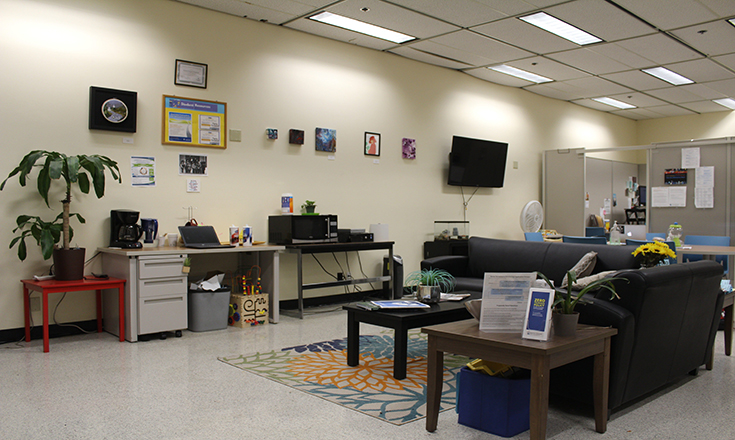Director of Student Support Programs, Molly Mitchell, oversees Seattle Central’s re-entry program for former or currently incarcerated students. Located on the third floor, the reentry program supports students navigating their new lives on the outside by offering referrals to school counselors, acting as a liaison between students and corrections officers and helping students overcome common obstacles to reentry. These may include acclimating to the technological advances that have occurred during incarceration, and helping to find a sense of community. “It is not uncommon,” says Mitchell, “for former prisoners to have a lack of community and family as well as the need to repair relationships.”
One of the largest difficulties that the program faces comes from the Department of Corrections and the work release program. Despite being enrolled students, work release participants can have difficulties accessing technology needed to complete coursework, as per DOC regulations. Work release participants are also expected to adhere to a very strict time schedule despite relying on public transportation. Which many inside the program find difficult to achieve, discouraging involvement.
Even though the program is fairly new, Mitchell already has success stories to share. There are four students who are currently enrolled in a BA program, students who have gone on to UW, and another student, who, after spending decades incarcerated, is now providing outreach to the transgender community.
Educational exclusion is a strong predictor of incarceration, which has been exacerbated by the Violent Crime Control and Law Enforcement Act signed into law in 1994. One of its many consequences was that it made prisoners ineligible for Pell grants, which are government grants for educational financial aid that have lower interest rates than private lenders. It also gutted prison education programs, which have been proven to reduce the instances of recidivism. According to a 2014 study, only 9% of incarcerated people received a certificate from a college or trade school while in prison. In 2016, federal Second Chance Pell Experimental Sites Initiative was enacted. This is a positive step in the direction of social equity, but it’s still not enough.
There is a major disparity in the amount of money the government allocates for corrections in comparison to education. According to a report from the U.S. Department of Education spending on corrections has increased by 89% since 1990, while spending on higher education has remained fairly stagnant. Leaving many both in and out of the system wondering if the situation will change without a re-prioritization towards education funding.






Comments are closed.